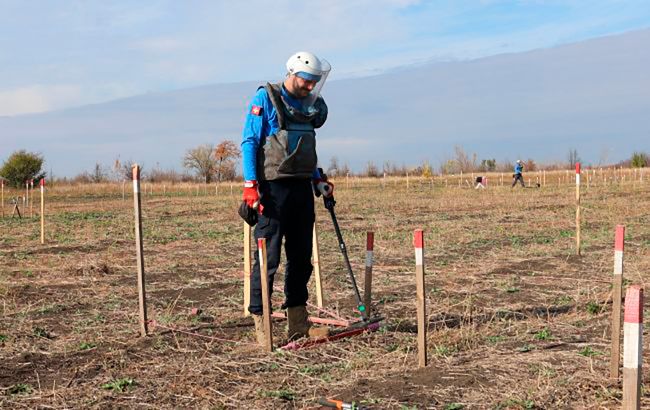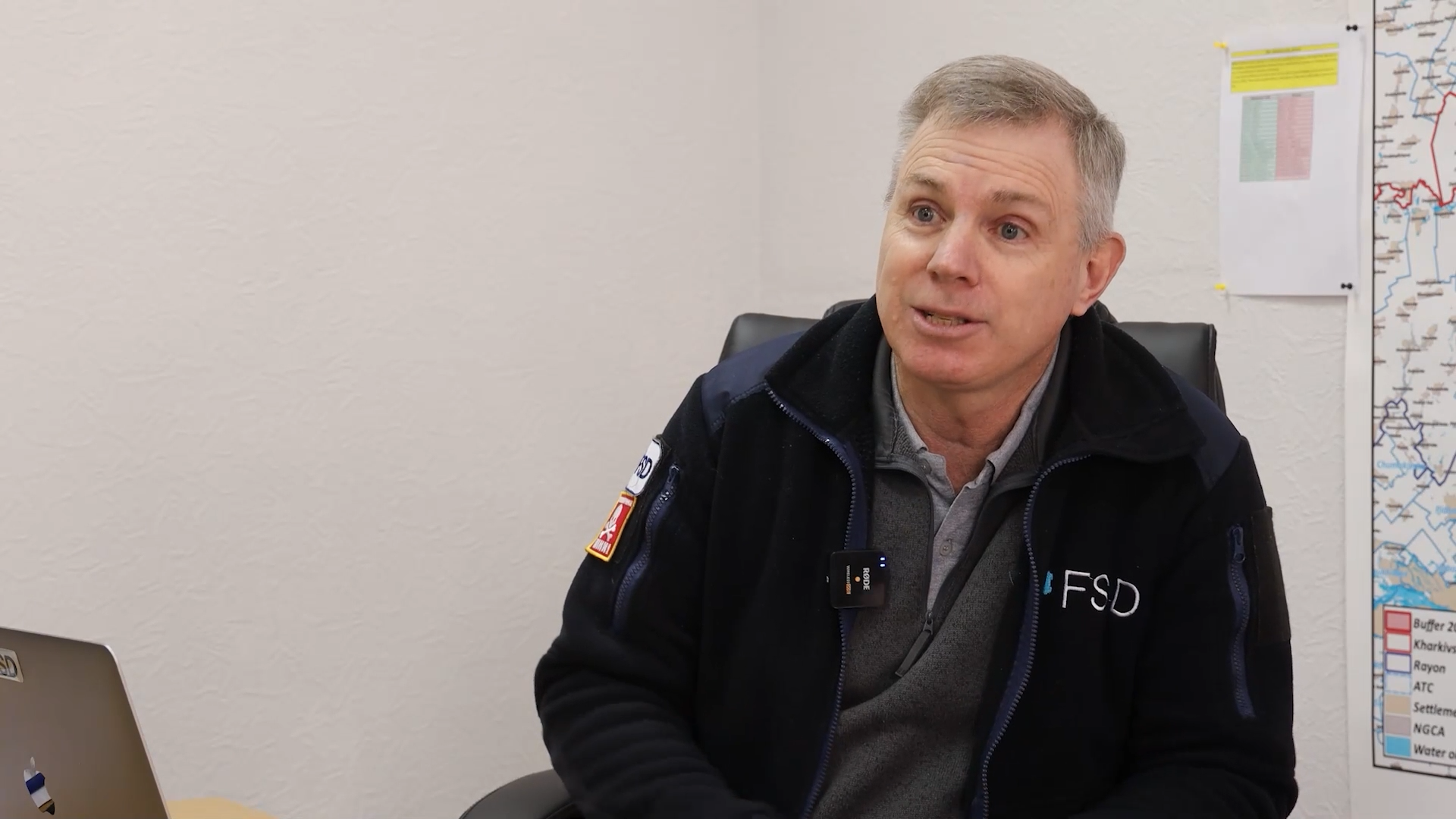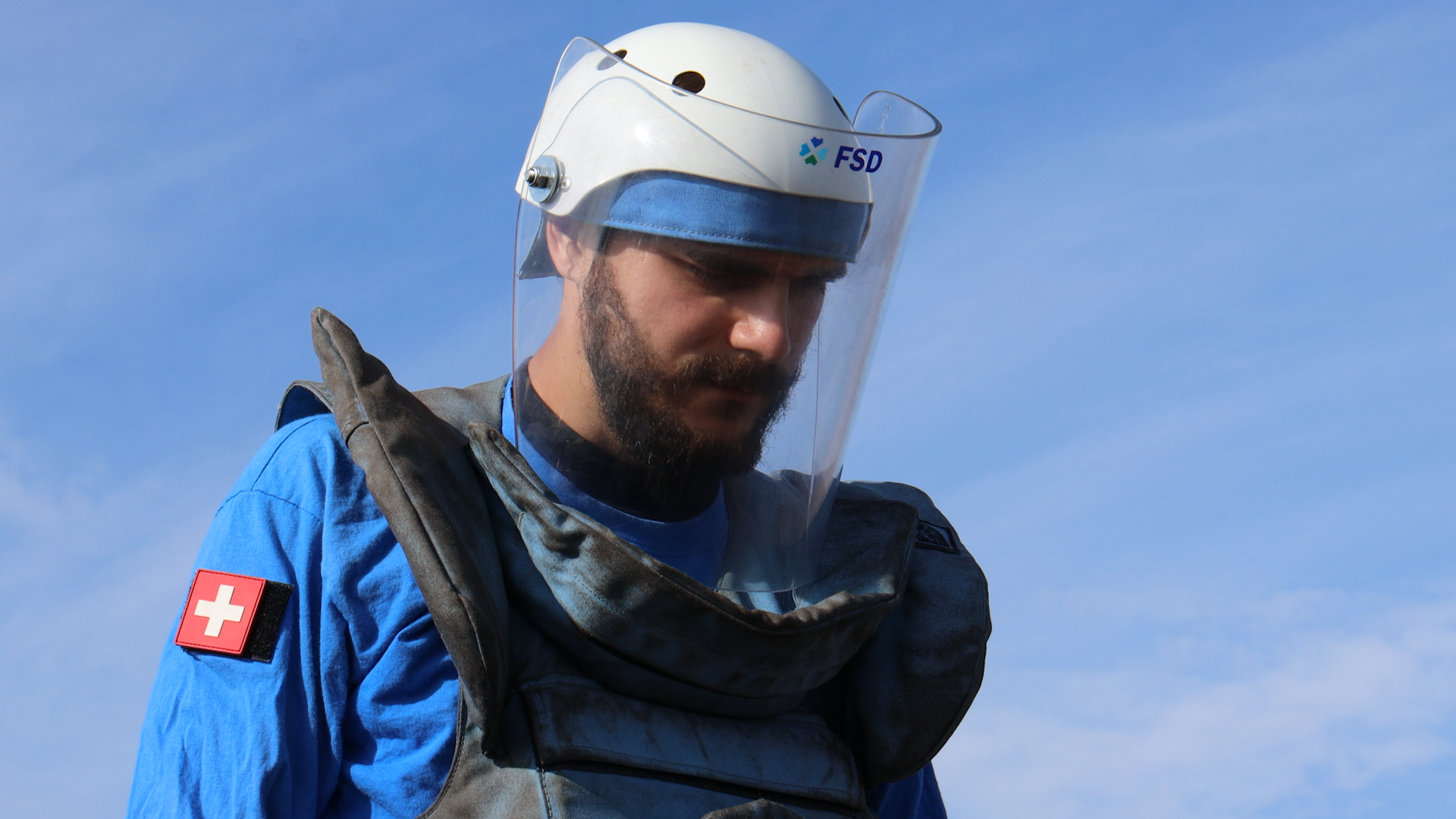Humanitarian demining in Kharkiv region: How deminers bring life back to mine-affected land
 How deminers bring life back to mine-affected land (photo: RBC-Ukraine)
How deminers bring life back to mine-affected land (photo: RBC-Ukraine)
Stories of people who endured the war on their own fields, the experience of deminers who risk their lives every day, and the first results of an international demining program that is restoring safety to the region — in a special project by RBC-Ukraine.
Today, Ukraine is one of the most heavily mined countries in the world. According to government data, more than 142,000 square kilometers remain potentially dangerous — nearly a quarter of the country’s territory. Every day, deminers clear around 60–70 hectares, yet even at this pace, the work will take decades.
The most challenging situation is in the east and south of Ukraine — especially in the Kharkiv region, which was under occupation for more than a year, with the frontline cutting directly through farmlands.
Fields that became a frontline
Before the full-scale invasion, agronomist Yurii worked at a large agricultural enterprise in the Kharkiv region. Wheat, sunflower, soybeans — predictable seasons, expected yields. Everything changed within just a few weeks of occupation.
"Our farm was almost destroyed," Yurii recalls. "The land was mined, and the wheat we sowed in 2022 simply burned. We couldn't harvest it."
For the first months, farmers worked almost by touch: machinery drove around unexploded rockets on the roads, operators encountered cluster munition fragments, and at times, fresh craters left by night shelling.
"We kept working even while active fighting was happening nearby. Mines, shells, cluster petals — we saw all of it every day," the agronomist says.

The Kharkiv region is one of the most heavily mined areas (screenshot from an RBC-Ukraine video)
Due to mining, the farm lost nearly three-quarters of its land. Some fields remained untouched for three years, overgrown with weeds and littered with debris. The situation began to change only after demining started.
"The cultivated area is gradually growing. And so is our morale. When a field stands covered in weeds because of mines, it’s hard even to look at it. But when you see deminers working, you start hoping that everything will return," Yurii adds.
Villages that survived in the grey zone
Communities struggled just as much. The Pryshyb district is a territory that was never formally occupied, but for half a year lived literally between the positions of two armies.
"Eighty percent of the houses here were heavily damaged. The population shrank from three and a half thousand to six hundred. People left to save their children," says head Olha Ustychenko.

Pryshyb district head Olha Ustychenko (screenshot from an RBC-Ukraine video)
After liberation, residents began returning to yards where unexploded shells lay, to gardens carved up by trenches, to forest belts where the enemy had left booby-trap mines.
"The first places to be cleared were the stadiums — the school one and the public one. So that children could at least play on safe ground. Only then did they move on to the fields and forest strips. There is still a lot of work ahead," Olha says.
For locals, demining is not an abstract process but a prerequisite for the community to live again: to restart businesses, cultivate the land, and bring people back home.

Demining is a prerequisite for communities to keep living (screenshot from an RBC-Ukraine video)
International project that saves lives
To cope with such a scale of danger, an extensive project by the Swiss humanitarian mine action organisation FSD (Fondation suisse de déminage) — supported by the JTI Foundation, has been deployed in the Kharkiv region. The format is comprehensive: demining teams, training, technical support, and on-site instructors.
"We don't just eliminate threats. We help Ukrainian specialists build their own capacity. Many of our colleagues had never seen a minefield a few years ago, and now they have substantial experience," explains Alex van Roy, Regional Program Manager at FSD.

Regional FSD Program Manager Alex van Roy (screenshot from an RBC-Ukraine video)
Within the program, demining teams received specialized vehicles, modern metal detectors, professional personal protective equipment, and materials for marking hazardous areas. Marking is the first and one of the most crucial stages. Before deminers begin physical demining, the territory is surveyed, risks are assessed, dangerous zones are marked, and the community is informed.
When every signal can be deadly
The deminers' workday begins at dawn. The team checks their equipment, conducts a briefing, and heads out into the field — where every meter may contain an explosive device.
"Our task is to make the land safe so that people can cultivate it again," says Maksym, the team leader.
He shows a box filled with fragments that the deminers collected in just one day. Among them are cluster munitions, petals from POM-3 mines, and remnants of shells.

Deminers undergo a safety briefing every day (screenshot from an RBC-Ukraine video)
Deminer Serhii explains that the work is painstaking. "We listen to the signals, identify them, and dig carefully. It's better to spend an extra minute than take a risk. There is no room for error here," he says.
According to the deminers, the best measure of effectiveness is not the number of neutralized explosives, but the moment when farmers return to a cleared field and harvest their first crop.
Partnership that delivers results
The Ukrainian Deminers Association (UDA) is also involved in the effort. Its specialists work as part of the project, while international partners provide them with essential equipment.

Ukrainian deminers received equipment from international partners (screenshot from an RBC-Ukraine video)
"We received not just assistance from FSD and the JTI Foundation. It became our core toolkit. Vehicles, protective gear, metal detectors, marking materials — without this, we simply couldn’t work at the pace we do now," says UDA manager Iryna Kustovska.
The most challenging areas are those inaccessible to machinery. Teams must proceed on foot through dense vegetation where any step may be dangerous. Yet even such territories are gradually surveyed and transferred for full demining.
Investment in future safety
The project includes regular training for Ukrainian deminers. FSD technical advisers work in the field alongside the teams, helping assess risks and improve procedures.
"The goal is for every specialist to know how to properly set warning markers, assess the terrain, and plan their work," explains project coordinator Anastasiia Shtonda.
Deminers operate within a clear system: one group conducts non-technical surveys, another is responsible for marking, and a third carries out full demining. This model allows large areas to be covered and ensures continuous work.

FSD advisers also work in the field alongside the teams (screenshot from an RBC-Ukraine video)
Results already transforming the region
With support from the JTI Foundation, the project has covered a significant part of the region. Over two years:
-
More than 38 km² of territory have been surveyed;
-
Around 200 sites have been transferred for further demining;
-
17,000 residents have completed mine safety training.
"Behind these numbers are saved lives," says Andrii Fita, Corporate Affairs Director at JTI Ukraine. "We chose this direction because humanitarian demining is the foundation for returning to normal life and economic recovery."
Cleared areas are already returning to agricultural use, communities are regaining access to their fields, machinery is once again entering the season, and people are coming back to their homes.

Sapper teams use modern metal detectors (screenshot from an RBC-Ukraine video)
Much work still lies ahead
The Kharkiv region is only one of many areas where the scale of danger remains enormous.
But it is here that one can clearly see how international support — the partnership of businesses, NGOs, donors, and the state — together form a system that will operate for years to come.
For agronomist Yurii, the result of demining is not measured by statistics.
"It gets easier on the heart when you know the field is clear and nothing has exploded. Then you can work and make plans," he says.
And it is precisely this — the ability to live, work, and rebuild — that humanitarian demining makes possible.

